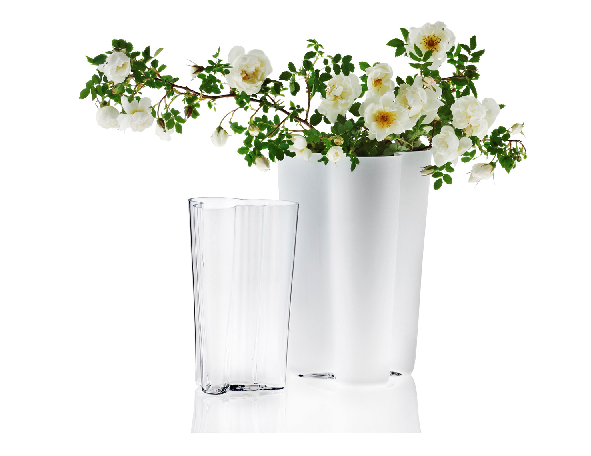Design Classics
Savoy Vase, 1936
Designer: Alvar Aalto
Manufacturer: iittala

Alvar Aalto (1898–1976) was the most important Finnish architect of the 20th-century and a well-known egotist. The two-foot high sign on his first office read “The Alvar Aalto Office for Architecture and Monumental Art,” and he delighted in having Finnair flights delayed for his inevitable late arrival. After Finland's independence from Russia in 1917, the country experienced a building boom and a flourishing of nationalist pride reflected in Aalto's adaptation of the Modern movement's style to the Finnish landscape. Aalto was also a prolific furniture designer.
WHAT
In 1936, Aalto won a competition sponsored by the glass manufacturers Karhula-iittala for products to be exhibited at the Paris World's Fair the following year (he also won the commission to design the Finnish pavilion itself). Aalto submitted some rough sketches for a series of molded glass vases he called Eskimoerindens Skinnbux – or Eskimo Woman's Leather Pants – ostensibly because of their undulating forms. The relation to Eskimo women is less clear. In 1937, Aalto designed an exclusive restaurant in Helsinki called The Savoy where the vases were used as centrepieces on each table. Since then they have been known as the Savoy vases. The original bases and shallow dishes were produced in clear, brown, azure blue, green and smoked-glass versions. Since the 1950s, opal, cobalt blue and ruby red colours have been made.
WHY
The sinuous, asymmetrical, organic shape of the vase is its most appealing feature and reflects Aalto's fascination with undulating forms – a design element found in much of his bent plywood furniture as well as in his architecture.
Many influences have been put forward to explain Aalto's inspiration – the nature of the liquids they hold, the shape of a puddle and the cross-section of a cut tree. Not to be discounted is the fact that “aalto” means “wave” in Finnish. One influence is certainly the organic shapes used by surrealist artists such as Jean Arp, Juan Miró and Alexander Calder (who was a friend of Aalto). Whatever the inspiration, whether you use them for flowers, marbles or mandarins, their sensual and sophisticated design is timeless.
National Post, February 16, 2006.
